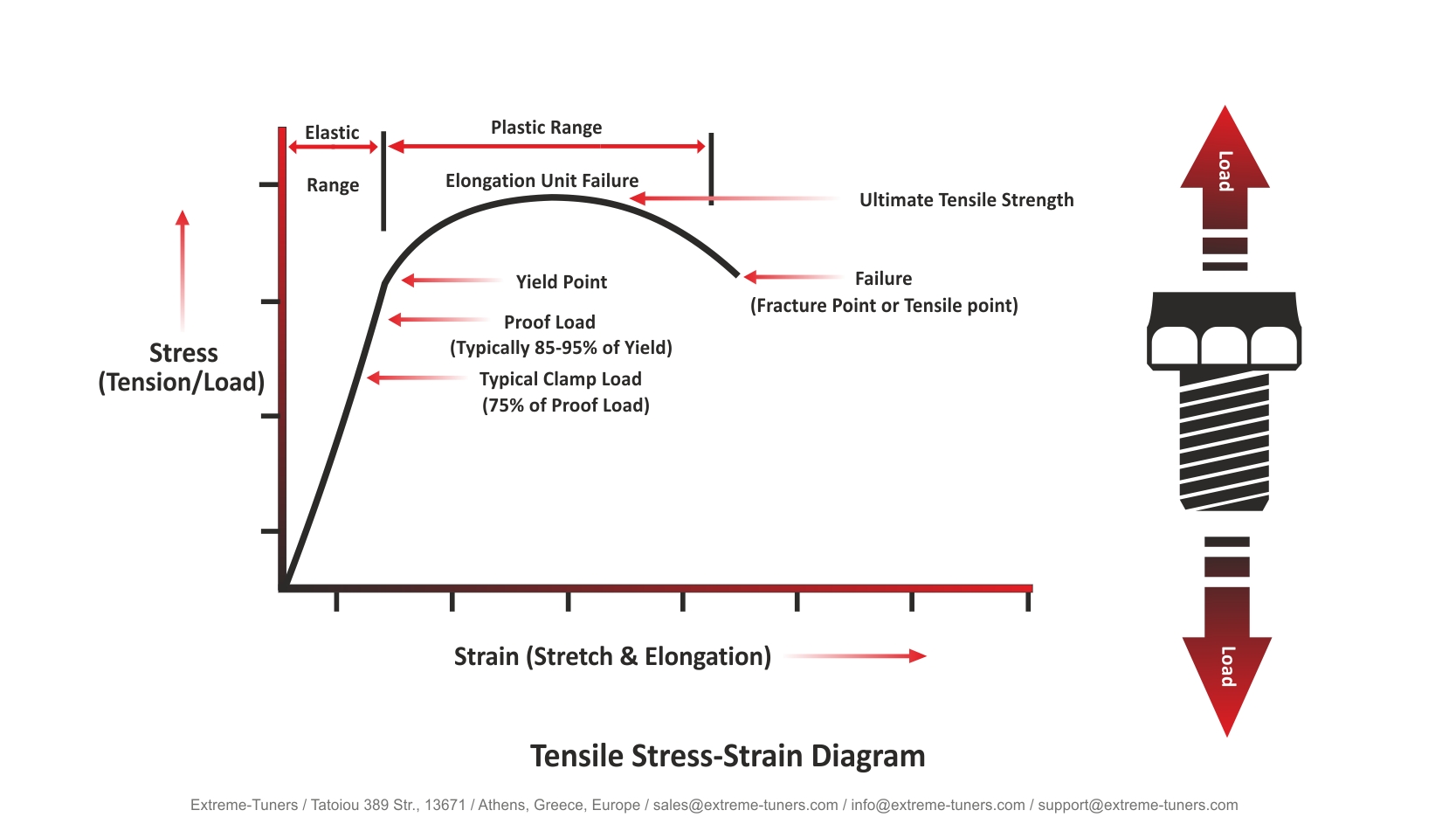ENGINE COMPONENTSFlywheel Bolts
After many failures of aftermarket flywheel bolts, we built our high quality line, we offer two styles of Flywheel bolts, H11 and premium H13 series. They are both heat-treated prior to machining, feature an exclusive, flat, 6 head design and larger than stock shank diameter for increased strength and improved flywheel register.
These flywheel bolts can torque more than 20kgr - 2700ftlbs depends the thread size.
we can built any custom design for any engine type.
What is proof load and how is it different from yield strength & ultimate strenght?
Each of these are basic mechanical properties that help define the expected tensile strength performance of a specific fastener and can be measured in units of force. In USCS and SI systems, force is measured in pound-force (lbf) and Newtons (N), respectively. Since the strength of fasteners is generally quite large, it is also common to see these forces listed in kilopound-force (klbf) and kilonewton (kN).
Proof load is defined as the maximum tensile force that can be applied to a bolt that will not result in plastic deformation. In other words, the material must remain in its elastic region when loaded up to its proof load. Proof load is typically between 85-95% of the yield strength.
Yield strength can be defined as the tensile force that will produce a specified amount of permanent deformation (most commonly 0.2%) within a specific fastener.
Ultimate tensile strength can be defined as the maximum force a specific fastener must withstand before fracture.
Why do bolts come loose?
There can be many possible causes for bolts to loosen in service. When we say “loosen” here we mean lose their tension, or preload.
Here are five major causes:
- Vibration which can create relative transverse movement of the bolted materials leading to self-loosening of the nut.
- Relaxation of the bolted joint after tightening due to embedment or gasket creep.
- Elastic interactions occur when multiple bolts are present in a bolted joint. The additional force applied to the joint members by tightening a bolt can affect the amount of tension on the other previously tightened bolts. Elastic interactions can either increase or decrease bolt preload making it even more difficult to predict.
- Temperature fluctuation of the components.
- Insufficient initial preload developed at installation
The design of the bolted joint can minimize relaxation and embedment, and ensuring sufficient preload at installation can reduce the effects of vibration and likelihood of relative transverse movement. In other words, properly designed bolted joints that are properly preloaded should not self-loosen!

